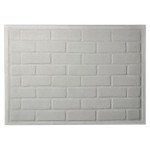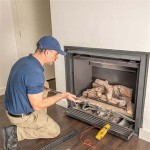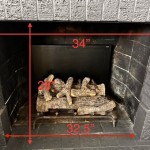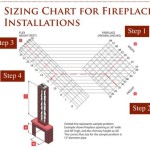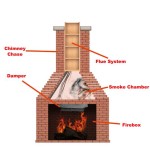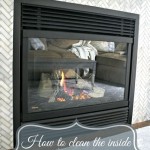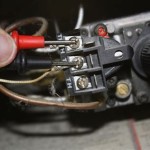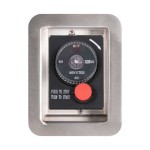Modern Tiled Fireplace Surround Ideas
The fireplace, traditionally a focal point for warmth and communal gathering, has evolved significantly in modern interior design. No longer relegated to purely functional roles, fireplaces now serve as aesthetic statements, injecting character and style into living spaces. Tiled fireplace surrounds are increasingly popular, offering a versatile medium for achieving a contemporary look. This article explores various modern tiled fireplace surround ideas, encompassing materials, designs, and installation considerations.
The selection of tile for a fireplace surround is a crucial decision that significantly impacts the overall aesthetic. Modern design principles often emphasize clean lines, minimalist details, and natural materials. Consequently, tile choices reflect this trend, with an emphasis on sophisticated textures, subtle color palettes, and geometric patterns. The size and shape of the tile also play a vital role in creating a specific ambiance and accentuating the fireplace's architectural features.
Material Selection for Tiled Fireplace Surrounds
The materials used for the tile surround not only affect the look but also the durability and maintenance requirements. Some popular materials include:
Porcelain Tile: Porcelain tile is a frequently chosen material due to its exceptional durability, water resistance, and versatility. It is manufactured with a low water absorption rate, making it resistant to staining and cracking, even under fluctuating temperatures. Porcelain tiles come in a vast array of colors, sizes, and textures, allowing for diverse design possibilities. They can mimic the appearance of natural stone, wood, or concrete, offering the aesthetic benefits of these materials without the associated maintenance challenges. Large format porcelain tiles are particularly popular in modern designs, as they minimize grout lines, creating a sleek and seamless appearance.
Ceramic Tile: Ceramic tile is another common option, often more cost-effective than porcelain. While it is less durable than porcelain and has a higher water absorption rate, ceramic tile is still suitable for fireplace surrounds, especially in areas that do not experience extreme temperature fluctuations or moisture. Ceramic tiles are available in an extensive range of colors, patterns, and finishes, offering substantial design flexibility. However, careful selection of the appropriate glaze is necessary to ensure that the tile can withstand the heat generated by the fireplace.
Natural Stone Tile: Natural stone tiles, such as marble, granite, slate, and travertine, offer a luxurious and timeless appeal. Each stone possesses unique veining, color variations, and textures, adding character and sophistication to the fireplace surround. Marble, with its elegant veining, is a popular choice for creating a refined and classic look. Granite, known for its durability and resistance to heat, is suitable for high-traffic areas. Slate provides a rustic and textural element, while travertine offers a warm and earthy aesthetic. The application of a sealant is often recommended to protect natural stone tiles from staining and moisture damage.
Glass Tile: Glass tile provides a sleek and contemporary appearance, reflecting light and adding depth to the fireplace surround. Glass tiles come in a wide range of colors, shapes, and sizes, including mosaic patterns, subway tiles, and larger format panels. They are relatively easy to clean and maintain, making them a practical choice for modern spaces. However, some types of glass tile may be more susceptible to scratching or chipping. It is crucial to select high-quality glass tiles specifically designed for fireplace applications to ensure their durability and heat resistance.
Cement Tile: Cement tiles, also known as encaustic tiles, are handcrafted tiles made from a mixture of cement, sand, and pigments. They feature intricate patterns and vibrant colors, adding a unique and artistic touch to the fireplace surround. Cement tiles are known for their durability and their ability to develop a rich patina over time. However, they require sealing to protect them from staining and moisture damage. Cement tiles are particularly well-suited for creating vintage-inspired or bohemian-style fireplace surrounds.
Design and Layout Considerations
The design and layout of the tiled fireplace surround are critical factors in achieving a modern aesthetic. Considerations include:
Tile Size and Shape: The size and shape of the tile can significantly impact the overall look of the fireplace surround. Large format tiles, such as 12x24 inch or larger, are popular in modern designs as they minimize grout lines, creating a clean and seamless appearance. Subway tiles, with their classic rectangular shape, are also a versatile choice, offering a timeless yet contemporary look. Geometric shapes, such as hexagons or triangles, can add visual interest and create a unique focal point. The choice of tile size and shape should complement the overall architectural style of the room.
Grout Color and Width: The grout color and width play a significant role in the overall aesthetic of the tiled fireplace surround. Matching the grout color to the tile color can create a cohesive and seamless look, while contrasting grout colors can highlight the shape and pattern of the tiles. Narrow grout lines are generally preferred in modern designs as they minimize visual clutter and create a cleaner appearance. Epoxy grout is often recommended for fireplace surrounds due to its durability, stain resistance, and water resistance. It is important to carefully select the grout color and width to complement the tile and achieve the desired aesthetic.
Pattern and Texture: The pattern and texture of the tile can add visual interest and depth to the fireplace surround. Herringbone, chevron, and stacked bond patterns are popular choices for creating a dynamic and eye-catching design. Textured tiles, such as those with a raised or uneven surface, can add tactile appeal and dimension. Mixing different tile sizes, shapes, and textures can create a unique and personalized look. However, it is important to ensure that the pattern and texture complement the overall style of the room and do not overwhelm the space.
Color Palette: The color palette of the tile is a fundamental element of the overall design. Neutral colors, such as white, gray, beige, and black, are commonly used in modern designs as they create a sophisticated and timeless look. Accent colors, such as blues, greens, or metallics, can be incorporated to add visual interest and personality. Monochromatic color schemes, using different shades of the same color, can create a subtle and elegant effect. The choice of color palette should complement the existing décor and create a harmonious atmosphere.
Fireplace Surround Dimensions: The dimensions of the fireplace surround should be carefully considered to ensure that the tile pattern is properly centered and balanced. The size of the fireplace opening, the height of the mantel, and the overall proportions of the room should all be taken into account. It is helpful to create a detailed drawing or rendering of the fireplace surround to visualize the final design and ensure that all elements are properly aligned. Accurate measurements and careful planning are essential for achieving a professional and aesthetically pleasing result.
Installation Considerations
The installation of the tiled fireplace surround is a crucial step that requires careful attention to detail and adherence to industry best practices.
Surface Preparation: Proper surface preparation is essential for ensuring the longevity and stability of the tiled fireplace surround. The substrate, such as drywall or cement board, must be clean, dry, and level. Any imperfections or irregularities should be corrected before tiling. Applying a primer or sealant to the substrate can improve adhesion and prevent moisture penetration. It is crucial to follow the manufacturer's instructions for preparing the surface to ensure optimal results. For fireplaces that use combustible materials in the substrate, be sure to adhere to any local building codes that dictate specified setbacks and/or use of non-combustible materials.
Adhesive Selection: Selecting the appropriate adhesive is critical for ensuring that the tile adheres properly to the substrate. Modified thin-set mortar is commonly used for tiling fireplace surrounds as it provides excellent adhesion, flexibility, and heat resistance. The specific type of thin-set mortar should be selected based on the type of tile being used and the environmental conditions. It is important to follow the manufacturer's instructions for mixing and applying the thin-set mortar to ensure proper bonding. A notched trowel should be used to create uniform ridges in the thin-set mortar, providing a consistent surface for the tile to adhere to.
Cutting and Layout: Careful cutting and layout are essential for achieving a professional and aesthetically pleasing result. Accurate measurements and precise cuts are necessary to ensure that the tile fits properly around the fireplace opening and any surrounding architectural features. A tile saw or wet saw is recommended for cutting tiles to ensure clean and accurate edges. The layout of the tile should be carefully planned to ensure that the pattern is properly centered and balanced. It is helpful to dry-fit the tiles before applying the thin-set mortar to ensure that the layout is correct and that any necessary adjustments can be made.
Grouting and Sealing: Grouting and sealing are important steps in protecting the tile and ensuring its longevity. Grout fills the spaces between the tiles, preventing water penetration and providing structural support. Selecting the appropriate grout type and color is crucial for achieving the desired aesthetic. Epoxy grout is often recommended for fireplace surrounds due to its durability, stain resistance, and water resistance. After the grout has cured, a sealant should be applied to protect the tile and grout from staining and moisture damage. The type of sealant should be selected based on the type of tile and grout being used. Regular cleaning and maintenance are essential for preserving the appearance of the tiled fireplace surround.
By carefully considering these material, design, and installation aspects, homeowners can create a modern tiled fireplace surround that serves as a stunning focal point and enhances the overall aesthetic of their living space. The possibilities are extensive, limited only by imagination and the desire to create a unique and inviting ambiance.

58 Best Fireplace Tile Ideas To Transform Your Hearth Remodel Decor Interior Design

Fireplace Tile Ideas Designs To Inspire You

Warm Up With Fireplace Tile Ideas Home Remodel Design

Fireplace Tile Ideas Designs To Inspire You

Fireplace Tile Design Ideas For 2024 The

Tile Around Fireplace Ideas Design Contemporary
These Tiled Fireplaces Are Swoon Worthy Tileist By Tilebar

Fireplace Feature Wall Ideas Queen City Stone Tile

14 Fresh Designs For Tiled Fireplaces Bob Vila
Trend Watch Tile Fireplace Surrounds

